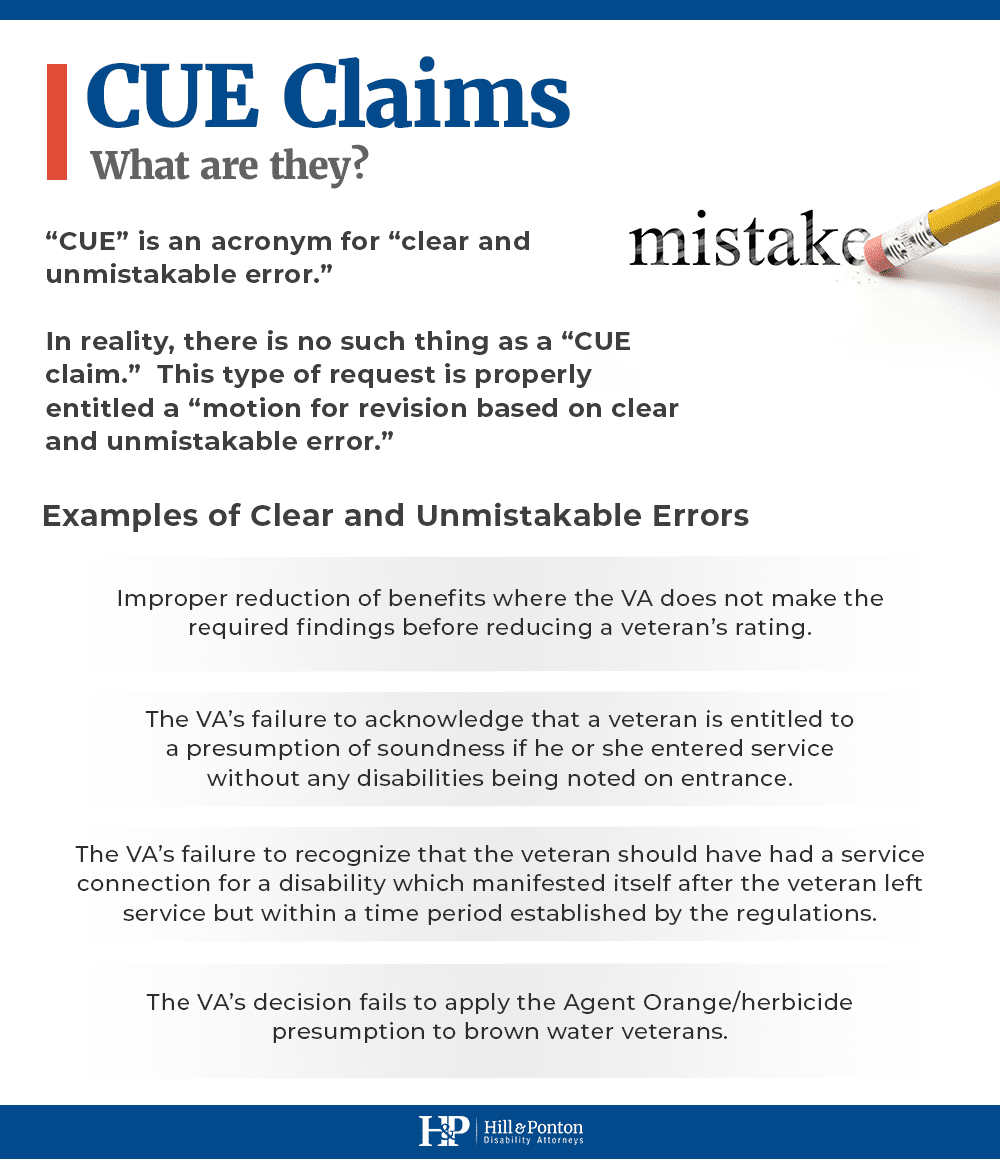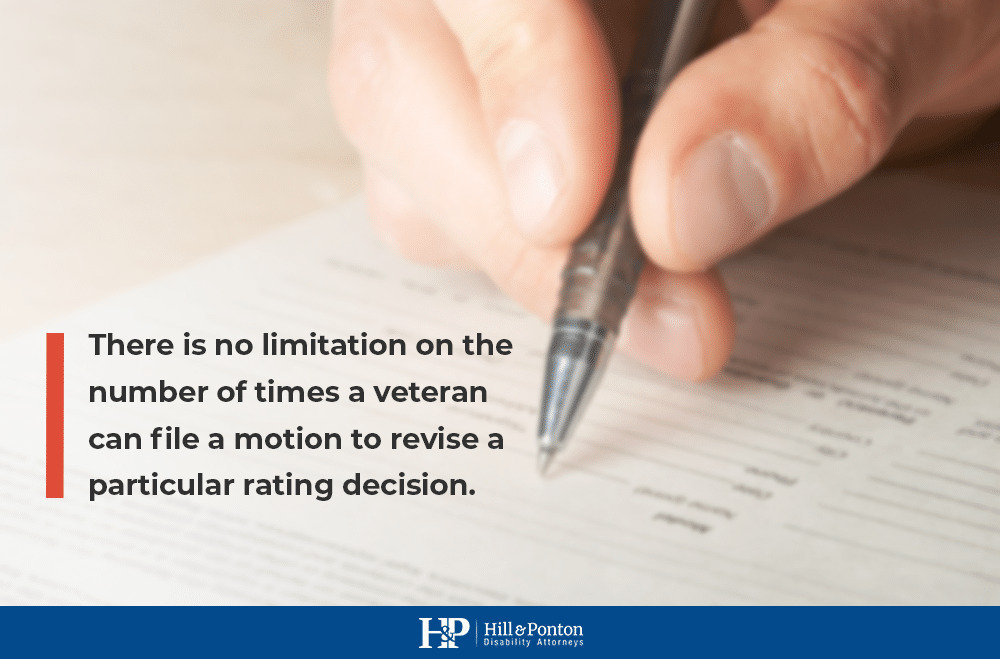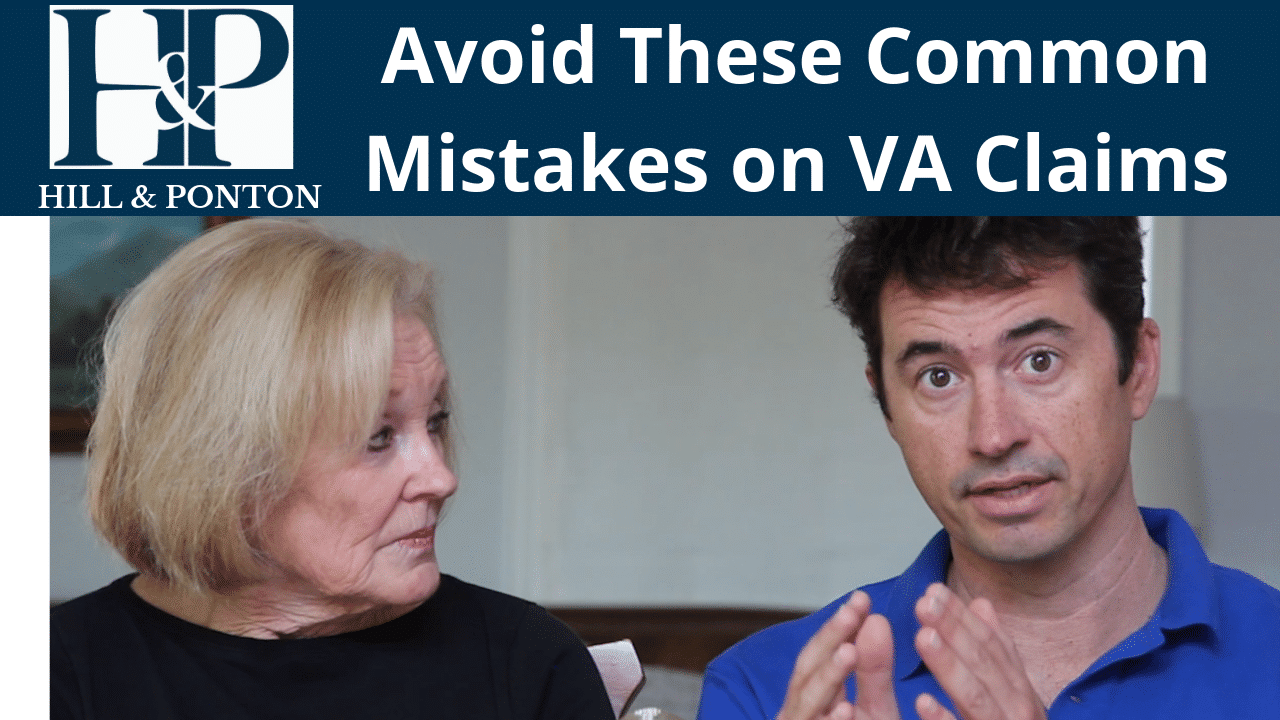As a general rule, when the VA awards service-connected disability benefits, the effective date for the award is the date of the latest claim the veteran has filed. There are, however, very few exceptions to this general rule which allow your VA regional office to assign an earlier effective date to a veterans benefits if an earlier claim was denied.
What is a CUE Claim?
One of these exceptions allows a veteran to request that an earlier rating decision (or decision by an adjudicator at the Board of Veterans’ Appeals) be revised. You will often hear this type of request improperly called a “CUE claim.”
“CUE” is an acronym for “clear and unmistakable error.” In reality, there is no such thing as a “CUE claim.” This type of request is properly entitled a “motion for revision based on clear and unmistakable error.”
A motion for revision of an earlier decision is rarely granted but can be a useful tool for getting an earlier effective date for your va disability claim. A motion for revision should only be made when the VA made a specific type of error and, but for that error, the VA would have granted va disability benefits.
A motion for revision is appropriate when the VA erred in incorrectly applying the law that was in effect at the time of the prior decision to the veteran files, and when the facts are clear and undebatable that the claim would have been granted if the law had been correctly applied.
It is much easier to demonstrate that the VA did not apply the law correctly than it is to try to show that it did not evaluate the facts correctly.

The CUE Claim Pleading Requirements
Motions for revisions have very specific pleading requirements. It is important to layout the history of the claim and, particularly, the facts as they were known at the time of the challenged rating decision. The VA will not consider evidence submitted after the challenged rating decision when determining if a clear and unmistakable error was made in making that prior decision.
The motion must also specifically include the error that the veteran alleges was made in that prior decision and must show that the VA relied on that error in making its decision. You must describe the error that the VA made and explain why there would have been a different outcome if the error had not been made.
In other words, you must explain how the the VA would have been required to grant your claim under the facts and law at the time if it had not made the error.
Some examples of clear and unmistakable errors that occur with some frequency are:
- Improper reduction of benefits where the VA does not make the required findings before reducing a veteran’s rating.
- The VA’s failure to acknowledge that a veteran is entitled to a presumption of soundness if he or she entered service without any disabilities being noted on entrance
- The VA’s failure to recognize that the veteran should have had a service connection for a chronic disability which manifested itself after the veteran left service but within a time period established by the regulations (for example, psychoses within one year after discharge or multiple sclerosis within seven years after discharge)
- The VA’s decision fails to apply the Agent Orange/herbicide presumption to brown water veterans.
- The VA’s failure to award special monthly compensation (SMC-S) to a veteran who has one disability rated 100% and a combination of other disabilities rated 60% or higher
Some examples of situations where a motion for revision based on CUE will not be successful are:
- A deferred rating decision in which the VA has not yet made a final decision
- A proposed disability rating in which, again, the VA has not yet made a final decision
- The VA’s failure to assist the veteran in obtaining documents at the time of the decision
VA Disability Claims and Motion for Revision
It is important to note that specificity is important in your motion for revision because if it is not specific enough or does not meet the VA established standards for a motion for revision, the VA can and will dismiss the motion.
If the decision is a rating decision from a regional office, the veteran can correct and re-file his or her motion as many times as necessary. There is no limitation on the number of times a veteran can file a motion to revise a particular rating decision.

However, if the decision is a decision from the Board, a veteran only gets one shot at a motion for revision or to correct facts in their claim.
If the motion isn’t done correctly at the Board level, the VA will dismiss the motion with prejudice, which means that the claimant cannot refile, and the veteran will be barred from any further efforts at the federal circuit court of appeals for veterans claims to show clear and unmistakable error in the Board’s decision.
In the event that you appeal your claim and are successful as an appellant, you may have an entitlement to back pay.
If you may have to file an appeal of your veterans disability decision, a law firm that focuses on veterans law can help. Our team at Hill & Ponton can assist you with a case evaluation to determine the best way to support you through the claim process.




